Writing Teaching Resources
Teaching writing strategies and the writing process this school year? Explore a comprehensive collection of teacher resources for elementary and middle school ELA teachers — all created by teachers!
Stocked with graphic organizers, writing prompts, templates, worksheets and so much more, this collection of printable and digital activities is designed to help you as you help your students become more effective communicators and unleash their creativity and imagination.
Save time on lesson planning with resources that have been through a careful review process by an expert member of our teacher team to ensure they're ready for your classroom and your students!
Are you looking for tips and tricks to add to your teacher toolkit this school year? Read on for a primer from our teacher team, including engaging activities for teaching writing in elementary and middle school and a look at some of the different writing strategies your students will need to learn.
11 Writing Strategies Kids Should Know by the End of Middle School
We can't talk about teaching kids to write without talking about the different writing strategies that can help them do just that!
When it comes to teaching our students to become confident writers who articulate their ideas effectively, here are some of the strategies our teacher team prioritizes:
1. Brainstorming
Brainstorming is something we often do in the classroom, and it's a crucial part of learning to generate the ideas that will drive students' writing as they progress through their educational journey. Kids should know how to create a list of potential topics or points related to a particular writing assignment.
With younger students, this is often done as a whole group by writing ideas and points on chart paper. In upper grades, students transition over to using text-based materials to generate ideas and talking points.
2. Outlining
Before diving directly into any assignment, our students should be able to create a structured framework or outline. Teaching students how to create this outline will help them organize their thoughts and arguments for penning their essays, reports and research papers.

3. Using Graphic Organizers
Technically graphic organizers are classroom tools, so you may not think of their use as a writing strategy per se. However, learning to use these tools is another means of providing kids with the tools they need to organize their ideas and information before they sit down to write.
These organizers are particularly useful for expository writing — students can use them to outline main ideas, supporting details, and transitions.
Students can also take advantage of story maps when they are working on narrative writing to plot the key elements of a story, such as characters, setting, conflict, rising action, climax and resolution.
Graphic organizers such as the OREO strategy and hamburger paragraph are also great tools for students to use when working with opinion and persuasive texts.
4. Freewriting
Writer's block is the enemy of creativity, and it can easily frustrate young students who don't know where to begin.
When students freewrite, they write continuously without worrying about grammar or punctuation. This writing strategy can be extremely freeing — hence the name! — and helps frustrated writers move past that writer's block, generating fresh ideas.

5. Peer Editing
Learning to review and provide constructive feedback on each other's work is a great writing strategy to employ in your classroom to help students improve their writing quality and enhance their editing skills.
The strategy allows your students to learn from one another, and it arms them with an important tool they can use well into the future — calling on peers to provide a critical eye to a piece of writing.
6. Using Sensory Language
Working on descriptive writing? With this writing strategy, students engage the reader's senses through vivid and sensory language to create a more immersive experience.
7. Including Transitions and Connectives
As students become more proficient in the writing process, learning to use transitional words and phrases allows them to create smooth transitions between sentences and paragraphs. This strategy makes their writing more coherent and polished.
8. Incorporating Evidence
In persuasive, opinion, and expository writing, students are taught to support their claims with evidence and examples to strengthen their arguments.
It takes some practice to train your students to use evidence in their writing, so it's often a good idea to start with something simple, like the R.A.C.E.S. strategy.
9. Crafting a Thesis Statement
In expository, opinion, and persuasive writing, crafting clear and concise thesis statements that summarize the main point or argument of their essay helps students be more focused and organized in their writing. This strategy can also have the effect of empowering students to express their ideas confidently and persuasively.
10. Incorporating Introductions and Conclusions
With this strategy, students practice crafting effective introductions and conclusions that grab the reader's attention and leave a lasting impression.
11. Following a Revision Checklist
Teaching your students to use a revision checklist is a strategy that will help them be more self-reflective, evaluating their own writing against the checklist criteria and becoming more aware of their strengths and weaknesses.

- Plus Plan
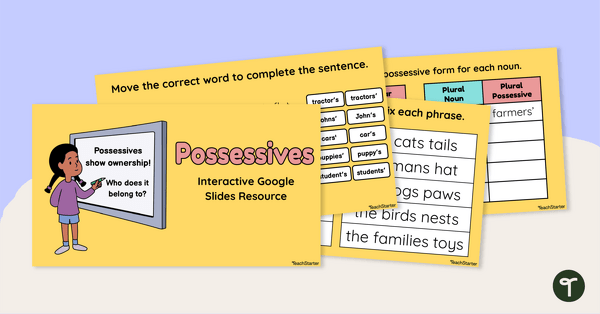
Possessive Google Interactive
Engage your learners with a Google Interactive activity designed to build skill with possessive nouns.
- Plus Plan
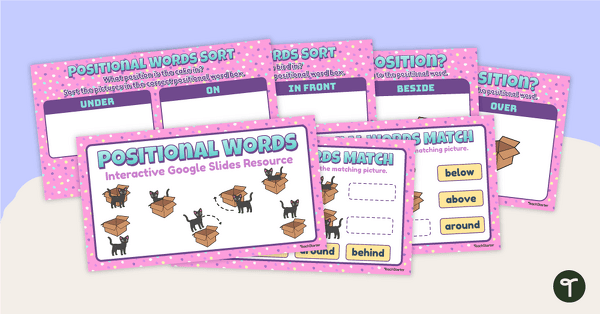
Positional Words-Interactive Prepositions Activity
Practice using position words (prepositions) with this Google Slides interactive activity.
- Plus Plan
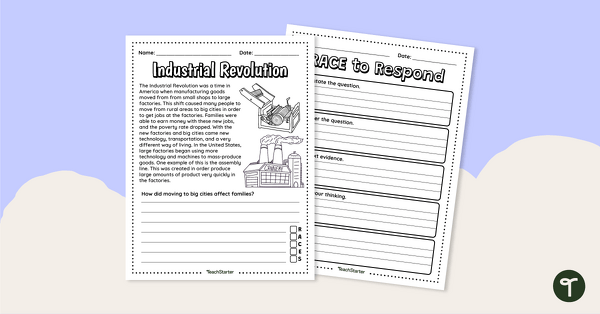
Industrial Revolution Worksheet - Constructed Response
Blend reading, writing, and history concepts surrounding the Industrial Revolution with a constructed response worksheet and graphic organizer.
- Plus Plan
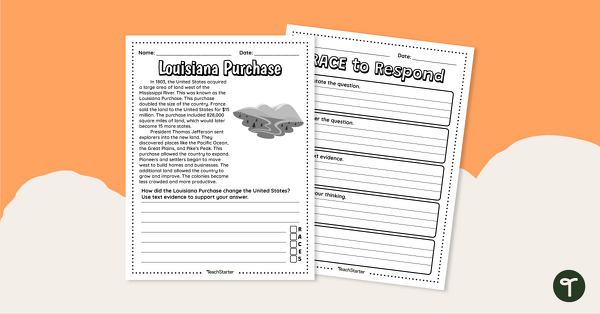
The Louisiana Purchase -Constructed Response Worksheet
Integrate reading, writing, and Social Studies content with a Louisiana Purchase Constructed Response worksheet and graphic organizer.
- Plus Plan
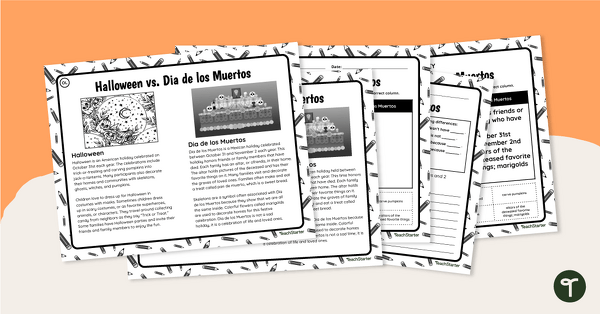
Halloween vs. Dia de Los Muertos - Differentiated Paired Passages
Integrate reading, writing, and celebration of world cultures with differentiated paired passages comparing Halloween and Dia de los Muertos.
- Plus Plan
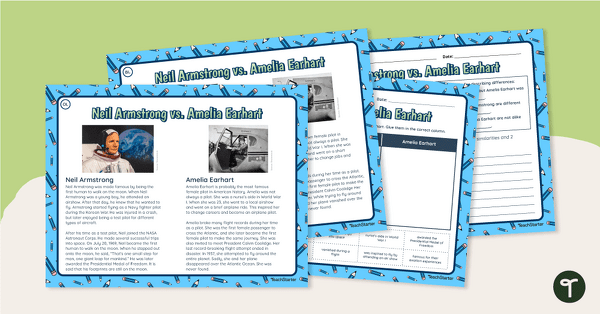
Armstrong vs. Earhart -Differentiated Paired Passage Worksheets
Combine reading and history content with differentiated reading comprehension worksheets.
- Plus Plan
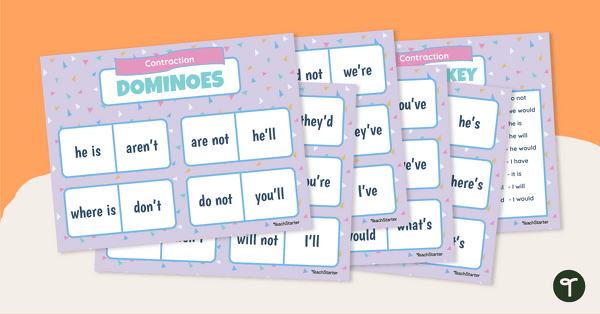
Contractions Dominoes
Build vocabulary and spelling skills and have fun with contraction word games.
- Plus Plan
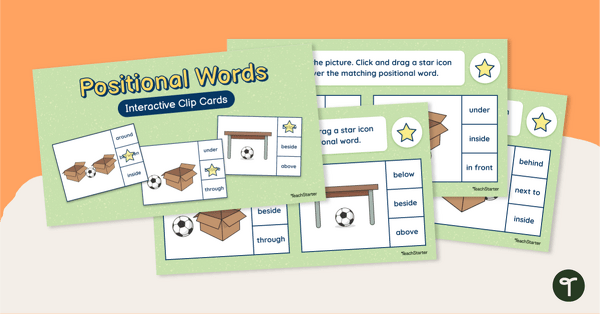
Positional Words Interactive Clip Cards
Practice using position words (prepositions) with this Google Slides interactive clip card activity.
- Plus Plan
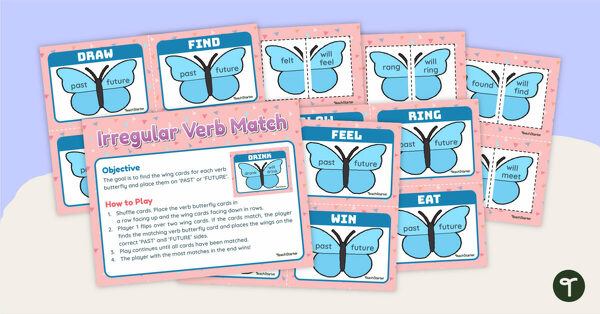
Past, Present, and Future Verb Tense Matching Activity - Irregular Verbs
Master past, present, and future tenses of irregular verbs with a butterfly matching activity.
- Plus Plan
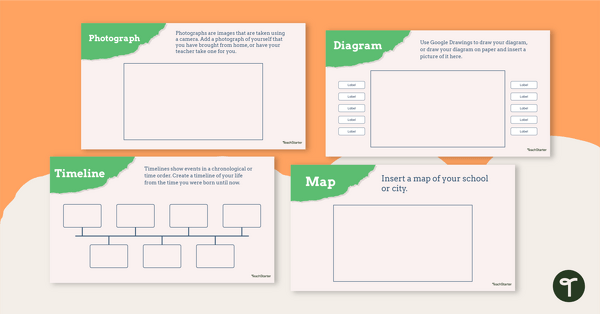
Nonfiction Text Features – All About Me Project
Implement a text features project with an “All About Me” theme to explore informational text features with your students.
- Plus Plan
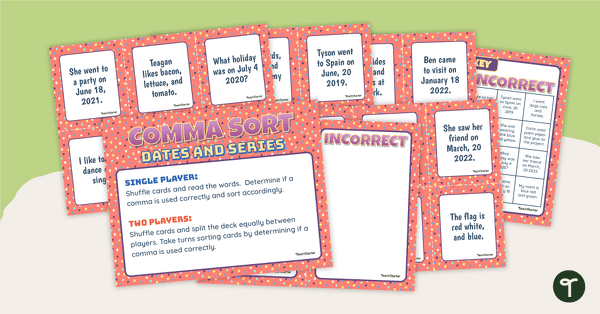
Using Commas in Dates and Series Sorting Activity
Practice correct comma placement in dates and series with a sorting activity.
- Plus Plan
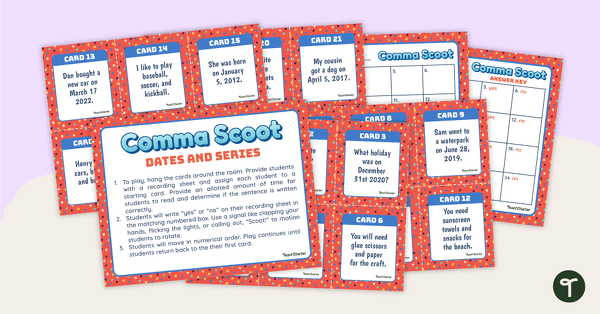
Using Commas in Dates and Series - SCOOT! Game
Practice using commas in dates and series with a whole-class SCOOT game!
- Plus Plan
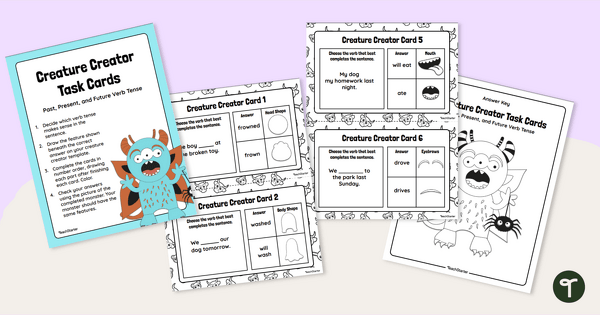
Creature Creator - Verb Tense Task Cards
Create a mystery creature using past, present and future tense verbs.
- Plus Plan
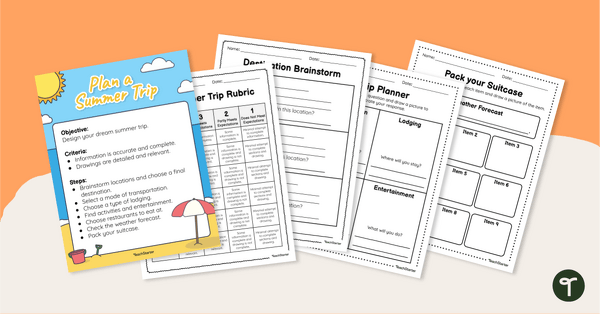
Plan a Summer Trip
Prepare for a summer vacation with an end-of-the-year STEM activity.
- Plus Plan

Abbreviations Board Game
Engage and excite your learners with a lively Abbreviations Board Game designed to teach the most common abbreviations in the English language.
- Plus Plan
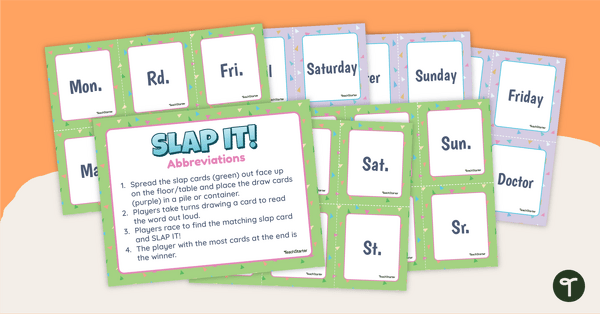
Abbreviations SLAP IT! Card Game
Play an abbreviation matching game to enhance grammar and spelling skills in the classroom.
- Plus Plan
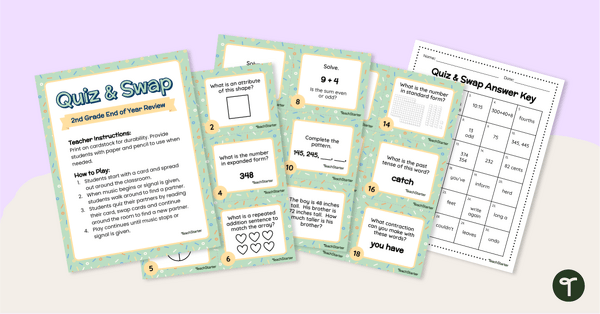
Quiz and Swap - 2nd Grade End-of-Year Review
Prepare your students for their end of grade assessments with an End-of-Year Quiz and Swap Review Game.
- Plus Plan
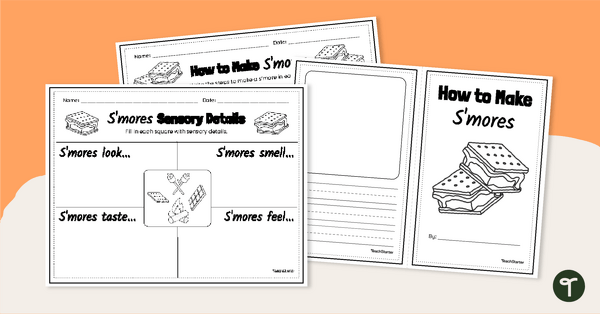
End-of-Year Writing – How to Make S'mores
Use this set of graphic organizers and mini-book to practice procedural writing.
- Plus Plan
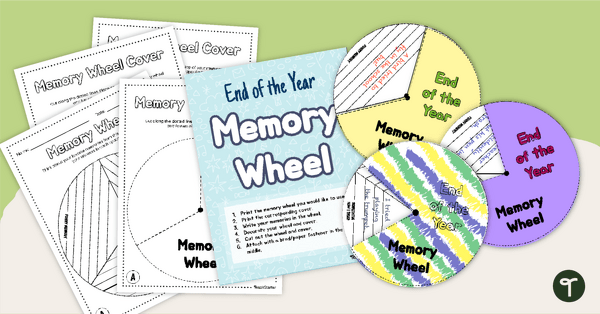
End of the Year Memory Wheel
Get your students’ minds spinning with this end-of-year reflection activity.
- Plus Plan
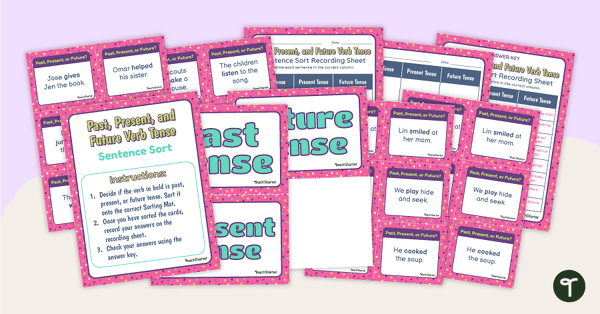
Past, Present, and Future Verb Tense Sentence Sort
Identify sentences written in past, present, and future tense with task cards designed for primary grades.
- Plus Plan
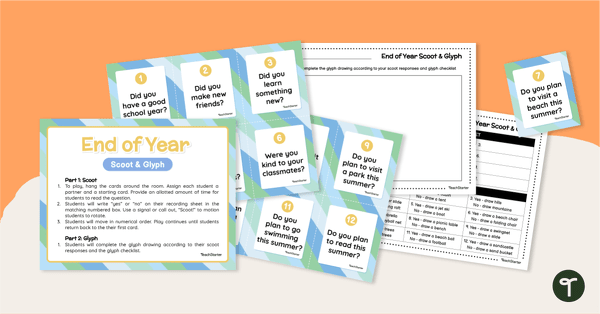
End of Year Scoot and Glyph Activity
End the school year with an activity in which students get to share their summer plans, get moving, and create a work of art.
- Plus Plan
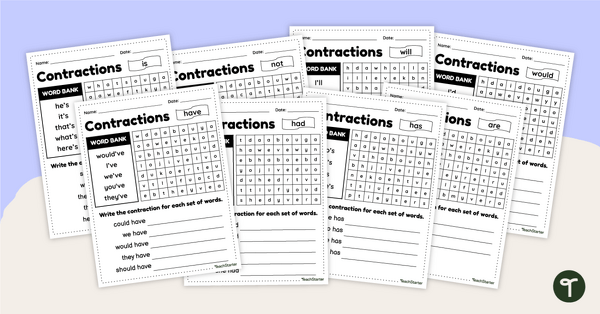
Contractions Practice Worksheets
Reinforce the concept of contractions with eight worksheets designed for primary learners.
- Plus Plan
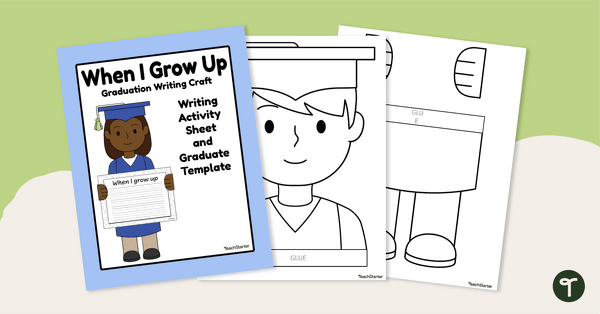
When I Grow Up - Kindergarten Graduation Writing and Craft Activity
Encourage your kindergarten graduates to write about their dreams while creating a “When I Grow Up” classroom display.
- Plus Plan
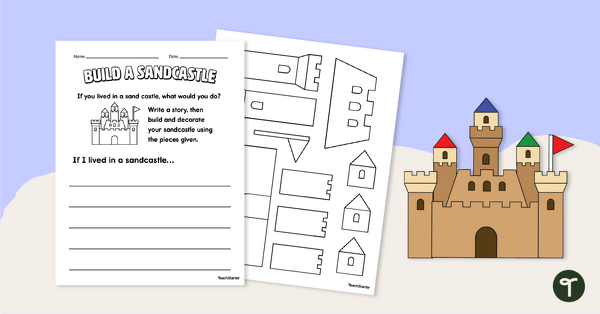
Build a Sandcastle-Writing and Craft Activity
Excite your students for the upcoming summer with a narrative writing and craft activity.
- Plus Plan
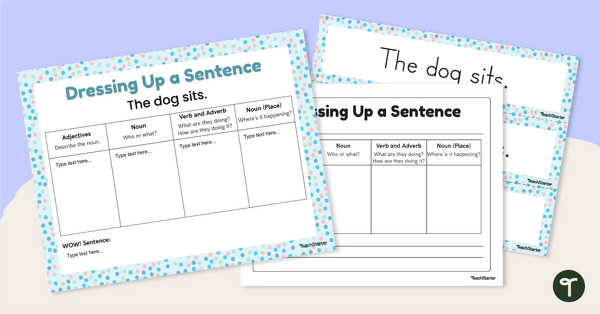
Dressing Up A Sentence - Interactive or Printable Activity
Encourage students to add more descriptive language into their sentence writing with this activity.
- Plus Plan
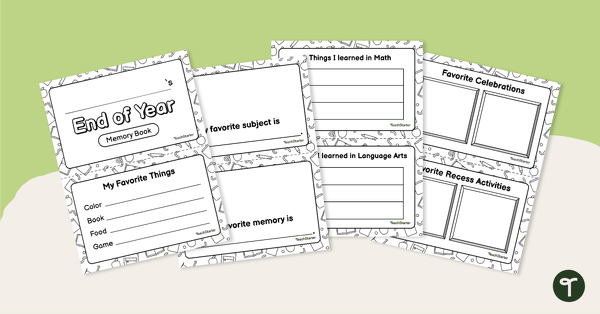
End of Year Memory Book
Reflect on the past year by responding to end-of-the-year writing prompts.
- Plus Plan
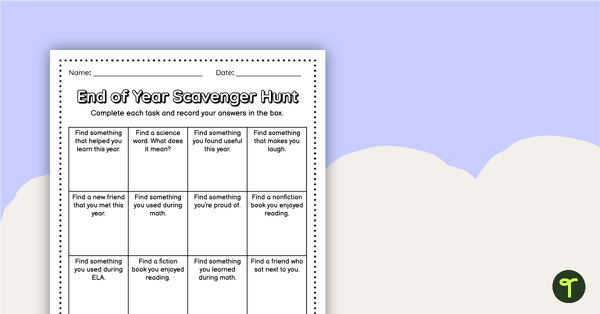
End of Year Scavenger Hunt
Use your investigation skills to complete this end-of-the-year scavenger hunt.
- Plus Plan
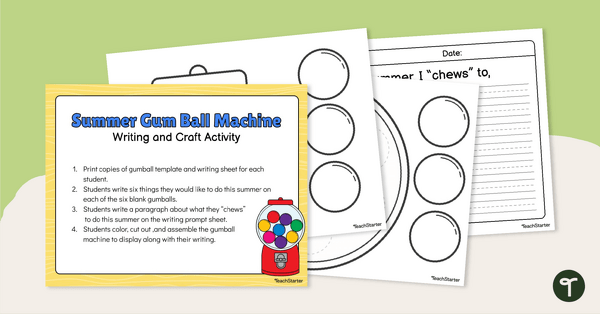
End of Year Writing Craftivity - Summer Plan Gumball Machine
Excite your students for the upcoming summer with a writing and craft activity.
- Plus Plan
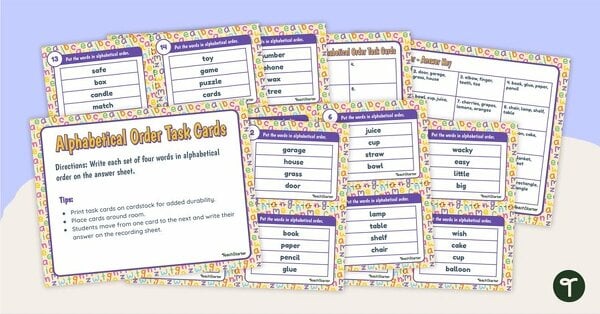
Alphabetical Order Task Cards (Grades 1-2)
Give your students some practice putting words in alphabetical order with a set of 20 task cards.
- Free Plan

Grammar Grid - Parts of Speech Mystery Picture (Crab)
Follow the color-coded parts of speech guide to fill in the word grid and reveal a mystery image.
- Plus Plan
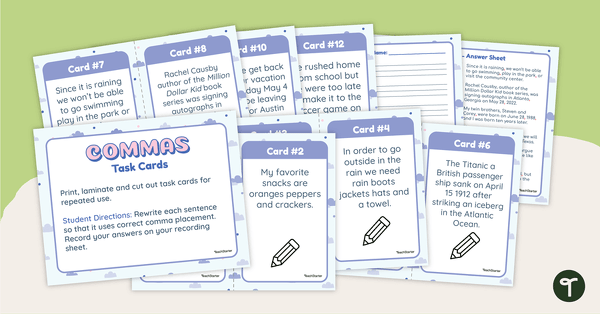
Comma Task Cards - Grades 4-6
Practice correct comma placement in dates, series, and compound and complex sentences.
- Plus Plan
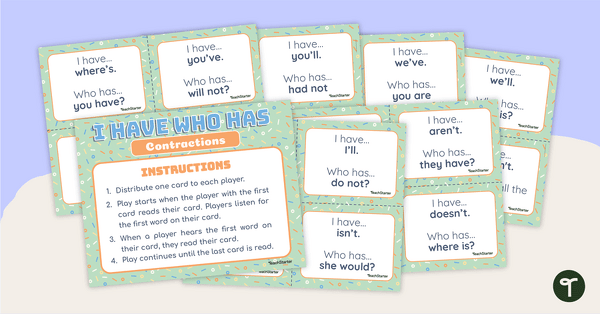
Contractions - I Have, Who Has? Card Game
Encourage correct spelling and usage of contractions in your Language Arts lessons with an engaging I Have, Who Has? Card game.